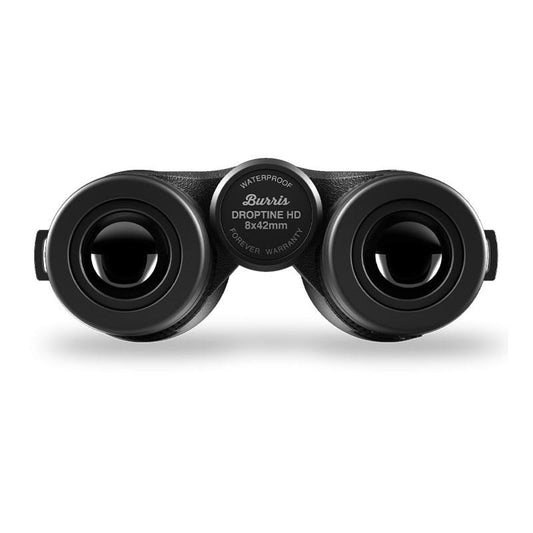

Burris Droptine HD 8x42 Binoculars are built for outdoor enthusiasts seeking reliable performance and clarity. With 8x magnification, these binoculars allow for clear viewing of distant subjects, making them suitable for birdwatching, hiking, and wildlife observation. The 42mm lens diameter ensures ample light transmission, enhancing visibility during low-light conditions such as dawn or dusk. Weighing just 25 oz, their lightweight design makes them easy to carry on long outings, while the ergonomic grip and non-slip armor provide comfort and stability, even in wet conditions.
Constructed with durable materials, the Droptine HD binoculars are both waterproof and fog proof, ensuring they perform in various weather situations. The adjustable eye cups accommodate users with or without glasses, allowing everyone to enjoy an optimal viewing experience. Whether tracking game or taking in scenic views, these binoculars deliver consistent quality and versatility for all outdoor adventures.
Key Features:
- ENHANCED CLARITY for precise viewing during dusk and dawn.
- LIGHTWEIGHT DESIGN ensures comfortable use during long excursions.
- RUGGED CONSTRUCTION withstands tough weather conditions.
- WIDE FIELD-OF-VIEW allows for easy tracking of moving targets.
- NON-SLIP GRIP for stability, even in wet or gloved hands.
- OPTICAL COATINGS improve light transmission for brighter images.
- ADJUSTABLE EYE CUPS for tailored comfort and ease of use.
- COMPATIBLE WITH TRIPODS for steadiness during long observation sessions.
Technical Specifications Table
| Specification | Detail |
|---|---|
| Magnification | 8x |
| Lens Diameter | 42 mm |
| Weight | 25 oz |
| Dimensions | 6.5 x 5.5 x 2.5 in |
| Material | Waterproof and fog proof |
What’s in the Box?
- Lens covers
- Padded case
- Neck strap
Customer Reviews
“These binoculars have completely changed my hunting game! The clarity is amazing, even at dawn.” - Mark J.
“I love how lightweight they are. I can carry them all day without any discomfort.” - Sarah L.
“Durable and reliable, the Burris Droptine HD is my go-to for all outdoor activities!” - James R.
FAQ
What is the performance in low light? Burris Droptine HD 8x42 Binoculars excel in low-light conditions, thanks to their superior optical coatings that enhance light transmission. This makes them an ideal choice for dusk hunting or early morning excursions.
How do I maintain my binoculars? Regularly clean the lenses with a soft microfiber cloth and store them in a dry place to avoid moisture build-up. Avoid exposing them to extreme temperatures for extended periods.
How do they compare to other models? The Droptine HD binoculars stand out with their combination of lightweight design, durability, and clear optics, making them a top choice for both casual users and serious hunters compared to other models in the market.
Similar Models
Looking for the perfect binoculars? Discover our extensive Burris lineup, including models like Burris Signature 10x42 for enhanced clarity and Burris Fullfield II 10x50 for greater light-gathering capabilities. Explore our full collection for exceptional optics tailored to your adventures.
You May Also Like
Here’s some of our most similar products people are buying. Click to discover trending style.






